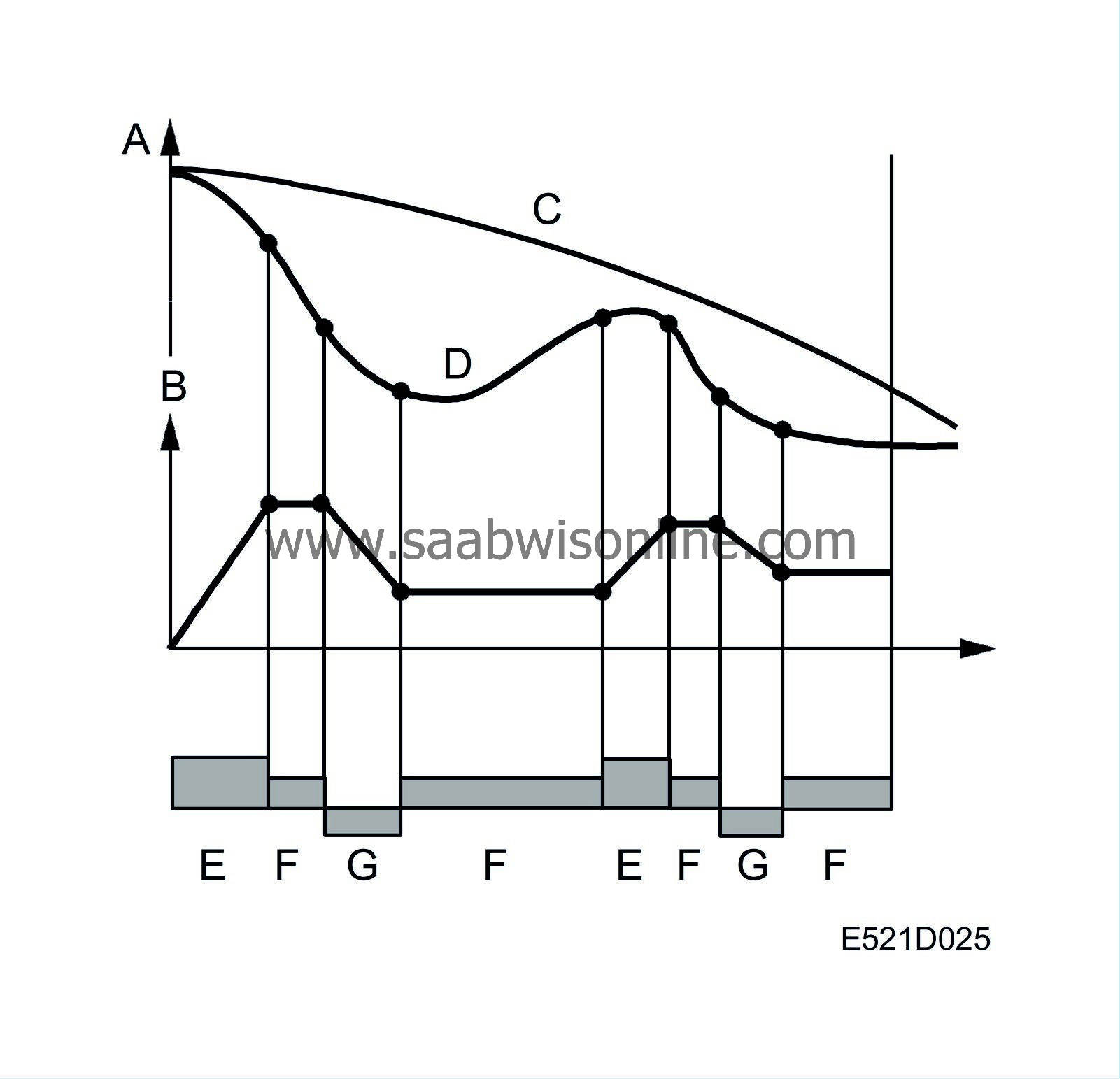ABS modulation
| ABS modulation |
| A. |
Speed
|
|
| B. |
Braking force
|
|
| C. |
Road speed
|
|
| D. |
Wheel speed (of rotation)
|
|
| E. |
Inlet valve open, outlet valve closed
|
|
| F. |
Inlet valve closed, outlet valve closed
|
|
| G. |
Outlet valve open, return pump actuated
|
|
When the control module detects that the retardation of a wheel is too high (increase in wheel speed), it modulates the brake pressure in three phases.
| Phase 1 |
Inlet valve closes. This prevents a rise in the brake pressure to the caliper and provides a flow of brake fluid upstream of the inlet valve for use in phase 3.
| Phase 2 |
The outlet valve opens, at the same time opening the passage from the caliper to the hydraulic accumulator, which quickly receives the pressure from the caliper. At the instant that the outlet valve opens, the control module starts the return pump which pumps the fluid back to the master cylinder. The wheel will now rotate faster.
| Phase 3 |
Simultaneously, the outlet valve closes and the return pump stops running. Thereafter, the inlet valve opens. This results in a drop in the wheel speed.
| Phases 1 to 3 |
These phases are repeated until either the brake is released or sufficient adhesion (friction) returns between the tyre and the road surface. In the event of a circuit break or short circuit occurring, the valves will return to the rest position, and conventional braking without ABS modulation will be obtained.



